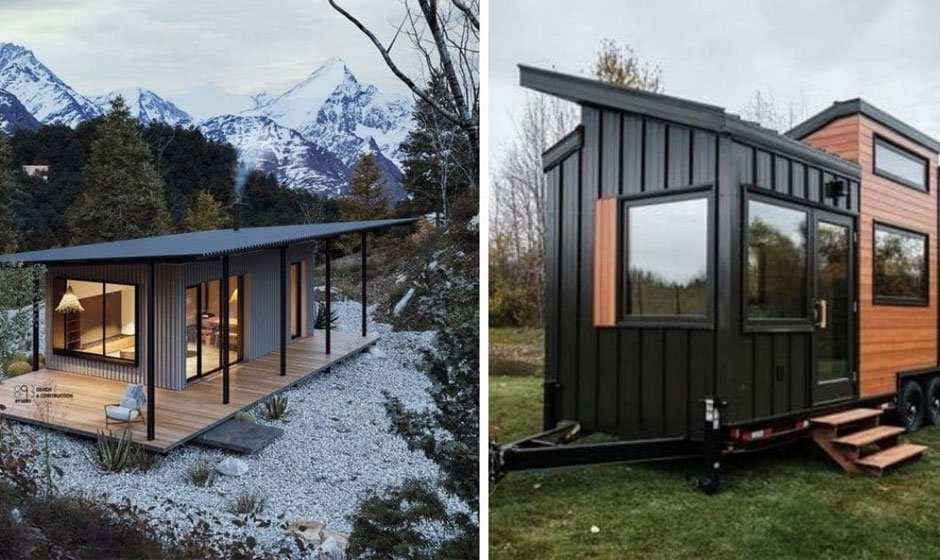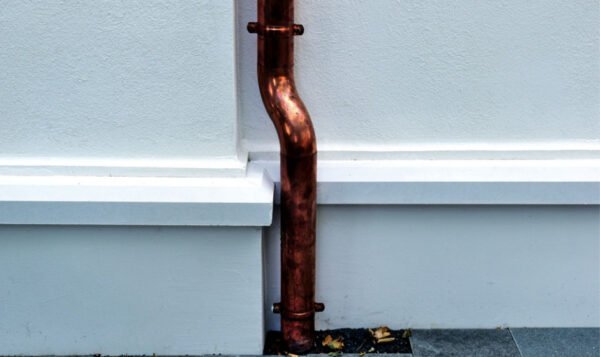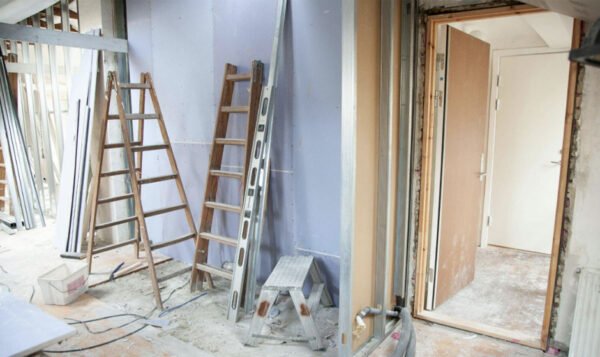Is a Prefab Metal Home Cheaper than a Tiny Home?

When it comes to alternative housing solutions, prefab metal homes and tiny homes have emerged as popular choices for those seeking a more affordable and sustainable way of living. With home prices higher than ever before and many young people struggling to buy a home, both metal home kits and tiny homes are viable options.
Both options offer unique advantages and cater to different lifestyles and preferences. While tiny homes are celebrated for their minimalist charm and mobility, prefab metal homes offer incomparable sturdiness and great cost-effectiveness. But which is more affordable when it comes down to it–a prefab metal home kit or a tiny home? Let’s take a look.
Understanding Prefab Metal Home Kits
Prefab metal homes, also known as prefabricated metal homes or metal home kits, are pre-engineered structures that are made of steel frames and panels that are manufactured off-site. The framing components are then delivered to the construction site, where they are assembled into the final dwelling in a matter of days or weeks.
Prefab metal homes come in various sizes and designs, offering homeowners endless customization options within an affordable, cost-effective package. The sturdy construction and strong durability of residential metal buildings make them an appealing option for those seeking a permanent and resilient living space, but at the fraction of the cost of traditional building materials like wood or concrete.
Exploring Tiny Homes
Tiny homes, on the other hand, are small, compact residential dwellings that typically range from just 100 to 400 square feet. BoxdLiving, a prominent advocate of this movement, has contributed to the growing popularity of tiny homes in recent years. These dwellings are designed to maximize space and minimize unnecessary features, encouraging a simpler and more minimalist lifestyle that resonates particularly well among younger generations.
Many tiny homes are built on wheels, giving homeowners the ability to relocate and explore different places easily so long as they have a vehicle that they can pull their tiny home behind. While tiny homes may initially appear to be the more affordable option due to their reduced size, there are various factors to consider when comparing them to prefab metal homes.
Comparing Metal Home Kits vs Tiny Homes
Metal home kits and tiny homes both have their pros and cons. Consider the following when choosing between one or the other.
Cost of Construction and Installation
One of the primary factors influencing the overall affordability of a home is the cost of construction. Prefab metal homes have a sure-fire advantage in this department. The components in a metal building are mass-produced in a controlled environment, reducing material waste and labor hours. They are cut and measured off-site, making for fast installation. As a result, prefab metal homes tend to be more cost-effective in terms of the initial building and installation process.
Tiny homes, while smaller in size, can still accumulate significant expenses during the construction process. Tiny homes have very intricate designs, custom features, and specialized materials, all of which can drive up the overall cost of the home. This narrows the initial cost gap between tiny homes and prefab metal home kits. Additionally, if the tiny home is built on wheels, factors like trailer costs and specialized engineering might add to the overall price.
Long-Term Value and Maintenance
When considering the long-term value of the two types of affordable homes, prefab metal homes have a clear advantage. Their steel-framed construction offers excellent durability and resistance to the elements, resulting in lower maintenance costs over time compared to tiny homes. Metal homes are also less susceptible to pest infestations, rot, and other common issues that can plague traditional wooden tiny homes.
Tiny homes, while charming and innovative, may require more regular maintenance due to their materials (usually wood) and construction methods. For example, wooden-frame structures demand periodic inspections, treatments, and repairs, which can lead to additional costs in the long run. Additionally, mobility might also affect a tiny home’s structural integrity over time, depending on the quality of the build and the frequency of travel.
Energy Efficiency and Sustainability
In the search for affordable living solutions, energy efficiency plays a crucial role in reducing ongoing expenses such as electricity. Prefab metal homes are often designed with energy-efficient features, such as insulation, energy-efficient windows, and sustainable roofing options. This focus on energy efficiency translates to lower utility bills and a smaller environmental impact.
Tiny homes, by nature, tend to have a smaller carbon footprint due to their reduced size. However, achieving high energy efficiency can be more challenging in tiny homes because they have limited space for insulation and efficient appliances. Still, with thoughtful design and eco-conscious choices, tiny homes can still achieve commendable sustainability–it just may cost more.
Local Building Regulations and Permits
An often overlooked but crucial consideration when evaluating the cost of a home is the local building regulations and permits in your area. Different regions may have varying requirements for the construction of prefab metal homes and tiny homes. While prefab metal homes generally comply with standard building codes outlined in the International Building Code (IBC), tiny homes might face more stringent regulations or even legal restrictions due to their mobility and unconventional nature.
The Choice is Yours
Choosing between a prefab metal home and a tiny home is a complex and personal decision that depends on various factors, including budget, lifestyle, and long-term goals. While tiny homes can appeal to those seeking a minimalistic lifestyle and a smaller environmental impact, prefab metal homes stand out as a more cost-effective and durable housing solution that will withstand the test of time. Their sturdy construction, energy efficiency, and broader market appeal make prefab metal homes an attractive option for individuals and families alike. Ultimately, the decision should be based on individual preferences, priorities, and financial considerations, ensuring that the chosen dwelling aligns perfectly with the homeowner’s vision of their dream home.



